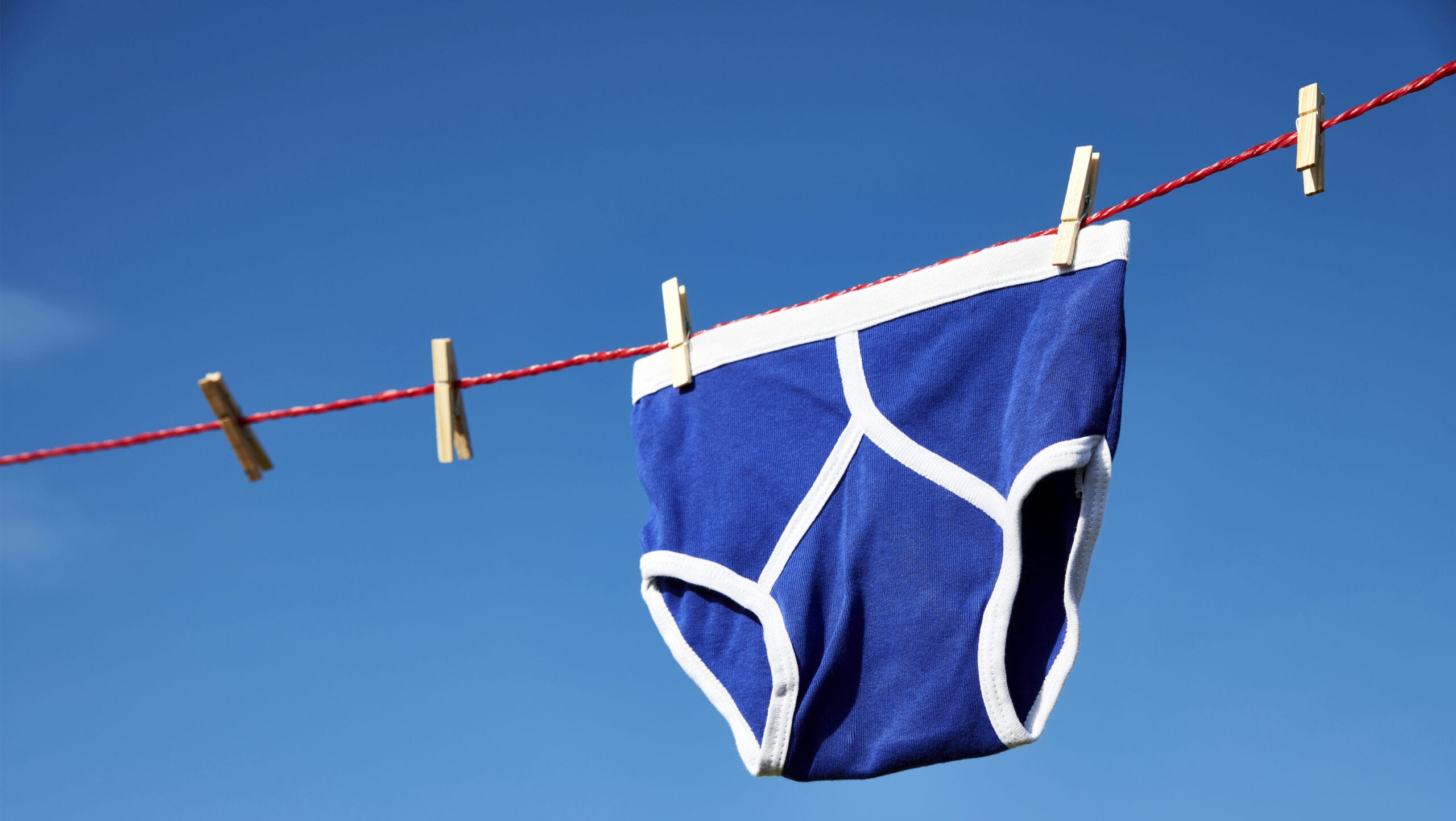When Carmen Liu came out as trans in 2014, she began to build a new wardrobe. The process was demoralizing: More than a year into her transition, the Manchester, U.K., resident was still unable to find underwear that she could comfortably wear.
She spent months scouring both online and brick-and-mortar stores to no avail. “I used to go to gay sex stores because they were the only places back then that I could think of that might have something for trans women,” Liu says. “But I couldn’t find anything. It felt like a slap in the face.”
She eventually bought gaffs, a kind of undergarment made specifically for tucking, which were functional and easy to find. “But they don’t last very long and they look tatty and horrible,” she says. “They’re a product you’d wear under something. They’re not worn to be comfortable or sexy.”
Meanwhile, living without gender-affirming underwear was severely affecting Liu’s mental health. DIY tucking or using a gaff could be painful, so she avoided doing so at home. That made moments that should have been relaxed, like doing odd chores around the house, frustrating and dysphoria-inducing. “You start getting to the point where you think, maybe I should turn back. Because it’s so difficult,” she says. “People take for granted what affirming underwear does for you.”
Liu gave up on searching and decided to do what trans folks have been doing for decades: She made her own underwear. She took the time to conceptualize, sew and test prototypes for aesthetically pleasing lingerie that included support and compression so the wearer could comfortably tuck. Four years later, she partnered with an investor who helped her to launch GI Collection, a lingerie line specifically for trans women and non-binary folks. She now ships the products to buyers in several countries.
“We get messages from customers almost every day,” she says. “A lot of them are really sad, honestly. Some people say they’ve been waiting 40 years for a product like mine.”
Liu’s line is one of many that have cropped up recently, offering underwear geared towards trans and non-binary folks. But, she says, her line is the only one she can think of that is making lingerie specifically for transfeminine people.
She’s not the only one who has noticed a dearth of options. A Vice article published earlier this year ran with the declarative headline, “Trans Women’s Underwear Doesn’t Exist.” And before Liu launched GI Collection, only one line created lingerie for trans women specifically (the now-defunct Chrysalis Lingerie).
While there are more choices than ever for trans folks seeking affirming undergarments, not every body is catered to equally—and not everyone has equal access to garments that make them feel affirmed.
The history of trans underwear is murky. Gaffs, for example, have been around since at least the 1960s and were traditionally marketed to people who cross-dressed and to female impersonators. While many companies still target these markets, other gaff manufacturers cater directly to transfeminine people.
The histories of chest binding and packing are equally hard to trace. Binding has been used in many historical contexts, often by cis women. Corsets were sometimes used to flatten the chest, for instance, and in the 1920s, commercial bust flatners helped cis women achieve the trendy “garconne” or “boy-girl” look (a real mood for some non-binary people today).
Mostly though, trans folks have been left to create their own underwear—sewing garments for themselves and their communities, or MacGyvering gaffs out of socks, binders out of Ace Bandages, and packers…also out of socks (they’re apparently a dysphoric trans person’s best friend).
It wasn’t until about 10 years ago that underwear made for gender nonconforming people began to hit the mainstream. Today, your Instagram feed is likely teeming with ads for gender-affirming gear. Brands like Pyramid Seven and Thinx offer period underwear in styles that are affirming to non-binary and trans-masculine customers. Last year, TomboyX launched its Trans Pride Collections, featuring tucking bikinis, packing briefs and binders. Play Out Apparel strives to create affirming underwear for multiple genders. On the surface, trans folks have a plethora of choice.
But not all offerings are made equal. Brands marketed largely toward cis people have started to adopt gender-neutral or trans-inclusive language as a marketing tool, paying lip service to inclusivity without adapting their products for the communities of people they supposedly cater to. The Woxer (literally, yes, “women’s boxers”) claims to offer boxers for “all women,” but doesn’t sell any products that allow wearers to tuck. Cami Tellez, the co-founder of underwear manufacturer Parade, has told interviewers that the company’s target demo are “women and femme-identifying people” without providing any indication who those “people” might be in the company’s catalogue or advertisements. And almost no one sells bras specifically made to fit trans women.
There’s also the question of cost. A single pair of TomboyX’s boy shorts or tucking bikinis, for example, can set buyers back $35—prohibitive amounts for many low-income trans folks.
Some producers, like Origami Customs, a Montreal-based line that custom creates undergarments for all genders, say this is inevitable. “I recognize trans folks face income disparities,” says founder Rae Hill. But, they say, if a label is using ethical labour practices, garments will always cost more than at fast-fashion retailers. To make their products more accessible, Origami donates garments to eight LGBTQ2-friendly organizations every month, who distribute the clothing within their communities.
Hill points out that sizing is also a major barrier for many shoppers seeking affirming underwear. “Products very rarely go above a XXL,” they say. “I’m not really sure that you can say the things are inclusive if you’re really only catering to a very small size range.”
Origami also works regularly with LGBTQ2 customers with disabilities to adapt gender-affirming styles to suit people’s needs. In the past, Hill has designed binders with openers on one side for people who aren’t able to pull the garments over their heads. They’ve also replaced typical fasteners on other garments with velcro and zippers, which are easier to use for folks with limited fine motor skills.
For her part, Liu hopes that products from lines like hers and Hill’s will one day be more widely available in mainstream stores. “[Cis] girls get to go out with their friends and try on clothes together. We don’t,” she says. “It’s like you’re missing a part of your life. A lot of trans or non-binary people have missed their childhoods already. Being barred from yet another experience just reinforces that you’re different.”
Hill believes that moving beyond the limited, binary approach most producers take toward undergarments serves everyone. “People have this idea that affirming garments have to be specifically for binding tucking or packing.” But, they say, an affirming product could look like a frilly bra with a wide band and a small cup, for example, or a boxer-brief in a larger size. “It’s about having the aesthetic and the comfort of something that feels true to you, and to your gender.”
Legacy: June 6, 2020 12:36 pmThis story has been updated to accurately reflect the cost of TomboyX tucking bikinis.


 Why you can trust Xtra
Why you can trust Xtra


